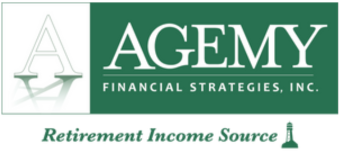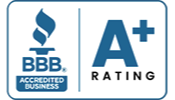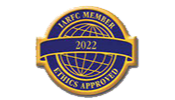The Tax Implications Of Retirement Savings
There are a lot of critical steps to preparing for retirement. One of the most important can be understanding the tax implications of your savings and planning for them accordingly.
It’s not just about figuring out how much income you’ll need to cover your post-retirement expenses; it’s also about understanding how taxes will affect your financial well-being during those years of relaxation.
In this blog, we’ll delve into the tax implications of retirement savings, equipping you with the knowledge you need to make informed financial decisions for your golden years. Here’s what you need to know.
Understanding Taxes and Retirement Income Sources
In retirement, your income will likely be a blend of resources, including Social Security, investments, and personal savings like 401(k)s and IRAs. Yet, it’s common for soon-to-be retirees to underestimate the intricate connection between these income sources and the tax implications they carry.

By acquiring a solid understanding of how taxes interplay with your retirement income, you gain the ability to make more informed financial choices. Making smart financial decisions can help you optimize your financial situation, help minimize tax liabilities, and help guarantee your retirement nest egg lasts so it can support the lifestyle you desire during your golden years. Let’s explore some of the key tax rules to keep in mind as you navigate retirement.
Taxes on Retirement Income
In retirement, different kinds of income are taxed differently:
- Most interest on bank deposit accounts (such as CDs or checking and savings accounts) is taxed at the same federal income tax rate as the money you receive from paid work.
- Distributions from traditional 401(k)s and IRAs are typically subject to the tax rates associated with your current marginal tax bracket.
- Dividends paid or gains from the sale of stocks are taxed at 0%, 15%, or 20%, depending on how long you’ve held the stock, your taxable income, and your tax filing status.
- Other income—such as qualified withdrawals from a Roth IRA, a Roth 401(k), or a health savings account (HSA)—are not subject to federal income taxation and do not factor into how your Social Security benefit is taxed. (Roth IRA distributions must meet the 5-year aging requirement to be tax-free and HSA withdrawals are only tax-free when used to pay for qualified health expenses.)
Retirement accounts like 401(k)s and IRAs are powerful tools for building your nest egg, but they come with rules, especially regarding withdrawals and taxes. Investing in Roth accounts can help shield you from unexpected taxes in retirement. However, if you’re using a traditional account and your withdrawals, be prepared to manage these extra costs on top of your regular expenses.
What About RMDs?
Required minimum distributions (RMDs) are the minimum amounts you must withdraw from your retirement accounts each year. Required Minimum Distributions (RMDs) are for investors who have reached age 73 and have a traditional 401(k) or individual retirement account (IRA). For years, the age threshold was 70½, but it was raised to 72 following the passage of the Setting Every Community Up for Retirement Enhancement (SECURE) Act. The RMD age was increased again at the end of 2022 to 73 as part of SECURE 2.0.
The onset of RMDs can put eligible taxpayers in between the rock and the hard place. If you don’t take them or withdraw the right amount, you’ll owe major penalties. But if you do take them, they’ll boost your taxable income—and hence, your income taxes for the year (unless the account in question is a Roth IRA or 401(k) that has been funded with after-tax dollars).
So, how can you navigate these potential tax challenges? Here are some tips:
- Diversify Your Savings: Instead of putting all your savings into tax-deferred accounts, diversify into accounts with different tax treatments, such as Roth IRAs, where withdrawals are tax-free in retirement.
- Consider Roth Conversions: Before age 72 (or 73, if you reach age 72 after Dec. 31, 2022), consider gradually converting portions of your tax-deferred accounts to Roth accounts. While this requires paying taxes on the converted amount at your current tax rate, it can reduce future RMDs and provide tax-free income in retirement.
- Plan Your Withdrawals: Collaborate with a financial advisor to strategize withdrawals from various accounts to help minimize your tax liability.
- Use RMDs for Charitable Giving: If you’re inclined to give to charity, consider using your RMDs for charitable donations through a Qualified Charitable Distribution. This helps meet the RMD requirement without increasing your taxable income.
By staying mindful of the potential tax implications and adopting a strategic plan, you can secure your retirement savings and reach your financial goals without an unnecessary tax burden.
Reduced Social Security Benefits
Many older adults in the United States have been surprised by the higher-than-expected Social Security payments and the substantial taxes accompanying them. Social Security benefits are subject to taxation in eleven states, such as Colorado and Connecticut, and the amount you may owe in taxes can reach up to 85% of your Social Security benefits, depending on the rules set by the Internal Revenue Service (IRS). Here’s how it works:
- If your combined income falls between $25,000 and $34,000, up to 50% of your benefits may be taxable.
- For individuals with an income exceeding $34,000, as much as 85% of their benefits could be subject to taxation.
- Joint filers with a combined income of $32,000 to $44,000 might face taxes on up to 50% of their benefits.
- If joint income exceeds $44,000, up to 85% of their benefits may be taxable.
The primary way to reduce the income tax on your Social Security benefits is by keeping your combined income below the specified threshold. Some effective strategies to help you lower your threshold include:
- Investing in Roth IRAs for your retirement income.
- Tapping into taxable income sources before retirement.
- Exploring options for gifting or transferring assets to reduce the taxable portion of your estate.
By exploring and combining these strategies, you can work towards minimizing the taxes on your Social Security benefits and improving your financial situation in retirement.

Estate Planning for Gifting and Legacies
A sizeable nest egg can position you well to financially assist family members or contribute to causes close to your heart. This could range from contributing to a grandchild’s college fund, helping with a relative’s medical expenses, or donating to your preferred charities. Transferring wealth can help you avoid high estate taxes, which can exceed income tax rates. Some states also impose inheritance taxes on what your heirs inherit. Here are some key points to remember:
- Connecticut has its own estate tax rules. For those who passed away before 2023, the estate tax rate varied between 10.8% and 12%, depending on the estate’s total value. However, starting in 2023, Connecticut has implemented a flat estate tax rate of 12%, regardless of the estate’s size.
- While Colorado has no estate tax, you might still need to pay federal estate tax. This tax only applies to individuals who pass away in 2022 if your estate is worth over $12.06 million. In 2023, the exemption rises to $12.92 million. Additionally, married couples can share this exemption, effectively doubling the amount they can pass on tax-free.
A strategic approach to mitigate over-saving is taking full advantage of annual and lifetime gift tax exclusions. In 2023, the annual tax-free gift limit is $17,000 per recipient, increased from $16,000 in 2022. You can give this amount to multiple individuals without incurring federal gift tax. Married couples can jointly give up to $34,000 per recipient. Staying within these limits eliminates the need to file a gift tax return for the year. Working alongside a trusted Advisor can aid in helping secure your financial legacy.
Work With A Financial Professional
If you’re worried about retirement planning, working with a Fiduciary Advisor can be beneficial. They can offer personalized plans and investment strategies to help you reach your retirement goals with ease.
At Agemy Financial Strategies, we are committed to educating our clients on various financial matters, including retirement planning, legacy planning, and wealth management, and we even provide support during the transition to retirement. With over 30 years of experience helping individuals retire, our unwavering dedication to educating and serving our clients remains at the core of our mission.
Final Thoughts
Tax planning is an important aspect of retirement planning that cannot be overlooked. Retirees who take the time to understand their tax obligations early can enjoy a more secure financial future.
While certain taxes may be deferred, others can be minimized through tax-efficient investment planning. This is why a Fiduciary advisor can be a valuable resource for those seeking to navigate the complexities of tax planning.
At Agemy Financial Strategies, we can help you explore your options to help ensure you’re not missing out on tax strategies that could help boost your retirement savings.







Leave a Reply
Want to join the discussion?Feel free to contribute!